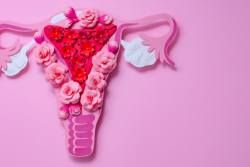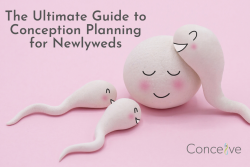Statistically, about 1/3 of genetically normal embryos don’t implant into the uterus. Why?
A big research review in May 2022 tried to answer this question.
The possible issues come down to 3 different categories: embryonic, uterine, and systemic.
Of all the things I’m about to discuss, they are not all equal in terms of how big an effect they have, or even how much data we have about them at this time.
We can summarize the MOST important factors into:
- embryo’s grade
- timing the window of implantation
- patient’s overall health and hormone status
Let me come back to those thoughts, and give you the full details.
Embryonic
- There are 25,000 genes in the embryo that have to turn on and off at the right times for implantation and continued development to happen. The genes can all be “normal,” BUT they also need to be coordinated like a symphony. Small accidental mistakes at critical junctions can impact success.
- The lab environment and freezing/thawing success
- The “grade” of the embryo – you know how you see a “3AA” type number attached to embryos? Note that there are differences between labs and especially between the US and Canada, in case you’re following other people’s stories. Success for implantation will depend on the embryo’s morphological grade, status of the zona pellucida, and day of blastocyst development.
- Day 7 blasts have lower implantation rates than day 5 or 6 at this point in time. (But several years ago, we didn’t even save day 7 embryos, so we’re watching to see where this science evolves in the future)
Uterine
There is another important aspect of synchrony between the embryo and the uterus, with a lot of signalling and communication that needs to go right. So far, we’ve identified TIMING as a big issue, which you may have heard of as the ERA test (endometrial receptivity test).
In this section, I’m going to say endometrium (the lining) and uterus almost interchangeably.
Structural issues in the uterus:
- Hydrosalpinges: fluid filled fallopian tubes. The fluid seems to actually create an unfriendly environment in the uterus and prevents implantation. This is usually screened for with ultrasound testing in advance.
- Fibroids: typically only if on the inside of the uterus, or of a certain size, though research still debates what size can be a problem. Smaller than 2.5 seem to be ok.
- Polyps
- Scar tissue: usually from previous procedures. Prior c-section lowers the implantation rate of a euploid embryo (“After adjusting for age at time of retrieval and transfer, BMI, endometrial thickness, difficulty of transfer, day of biopsy, and embryo grade, prior c-section was associated with 41% lower odds of implantation (OR 0.59, CI 0.40-0.88).”) (2)
- Congenital abnormalities: of the size/shape of the uterus itself
**Most of these should be picked up by routine transvaginal ultrasounds and Sonohysterograms.
Issues with the endometrium (lining of the uterus):
- Window of implantation: The evidence is still insufficient to say whether ERA (endometrial receptivity assay) testing makes a statistical difference in implantation rates.
- Lining thickness: we need a minimum of 7mm, which is being measured during ultrasounds.
- Endometritis: the name of an infection in the uterus. Not very common (~10% of the general population, 15% of women undergoing in vitro fertilization (IVF), and as high as 42% in patients with recurrent implantation failure (RIF)) (3). A biopsy is required to diagnose this.
- Progesterone resistance at a molecular level within the endometrium: This is primarily thought to be an issue with endometriosis patients, and it’s thought that the large doses of progesterone used for an embryo transfer overcome this, possibly making it a non-issue when assisted reproduction techniques are used.
Systemic:
- Insulin resistance: research papers will technically only talk about an increased BMI, which is different but shares overlap with insulin resistance, and I wish research would separate these out more.
- Cigarette smoking: affects egg quality and blood flow to uterus
- Thyroid dysfunction: helps coordinate the endometrium for implantation
- Prolactin levels: may be involved in maintaining the corpus luteum
- Vitamin D deficiency: Vit D impacts genes essential for implantation
- Progesterone levels on day of transfer: There is fair evidence to say that implantation is improved with levels greater than 63 nmol/L on the day of transfer (>20ng/mL)
- MTHFR gene mutations in the *embryo* (not the mom) may negatively impact implantation.
Not to complicate this discussion, but I want you to have the complete picture.
From that same review published in May 2022, here are the things that we do not have sufficient evidence to make a difference:
- endometrial compaction
- endometriosis or adenomyosis
- a difficult embryo transfer
- endometrial scratch (good evidence it does not affect implantation rate)
- FET protocol (good evidence it does not affect implantation rate)
- embryo made from a previously frozen egg
REMEMBER that of this huge list, they are not equal in terms of how big an effect they have, or even how much data we have about them at this time.
Many of these factors are non-modifiable, so we as Naturopathic Doctors are looking at the pieces that are modifiable to work with science and the patient to change outcomes.
What can we influence when it comes to embryos?
Let’s come back to our most important points at the start of this article:
- Embryo grade
- If we work on egg and sperm quality ahead of time, we can make better embryos. Approximately 100 days before IVF, we can make an impact.
- Timing the window of implantation
- Influencing the hormone receptors in the uterus. For example, some herbs and nutrients benefit progesterone receptors, which are needed for implantation and pregnancy.
- Patient’s overall health and hormone status
- Your IVF doctors are making sure your thyroid, estrogen, and progesterone, are all in line. Let’s make sure we don’t miss thyroid antibodies, insulin, prolactin, and less obvious hormones.
Citation:
(1) https://www.fertstertreviews.org/article/S2666-5719(22)00003-2/fulltext
NARRATIVE REVIEW| VOLUME 3, ISSUE 2, P105-120, MAY 01, 2022
A review of factors influencing the implantation of euploid blastocysts after in vitro fertilization
Evan A. Reshef, M.D.
Alex Robles, M.D.
Jenna S. Hynes, M.D.
Jenna M. Turocy, M.D.
Eric J. Forman, M.D.
(2) https://www.fertstert.org/article/S0015-0282(20)30929-8/fulltext
ABSTRACT ONLY| VOLUME 114, ISSUE 3, SUPPLEMENT , E56, SEPTEMBER 01, 2020
THE ASSOCIATION BETWEEN PRIOR CESAREAN SECTION AND ASSISTED REPRODUCTIVE TECHNOLOGY (ART) OUTCOMES IN WOMEN UNDERGOING AUTOLOGOUS SINGLE THAWED EUPLOID EMBRYO TRANSFER
Jenna Friedenthal, MD
Dmitry Gounko, MA
Tamar Alkon-Meadows, MD
(3) https://www.ncbi.nlm.nih.gov/pmc/articles/PMC5234283/
Clin Exp Reprod Med. 2016 Dec; 43(4): 185–192.
Published online 2016 Dec 26. doi: 10.5653/cerm.2016.43.4.185
PMCID: PMC5234283
PMID: 28090456
Chronic endometritis and infertility
Hyun Jong Park,1 You Shin Kim,2 Tae Ki Yoon,2 and Woo Sik Lee2










